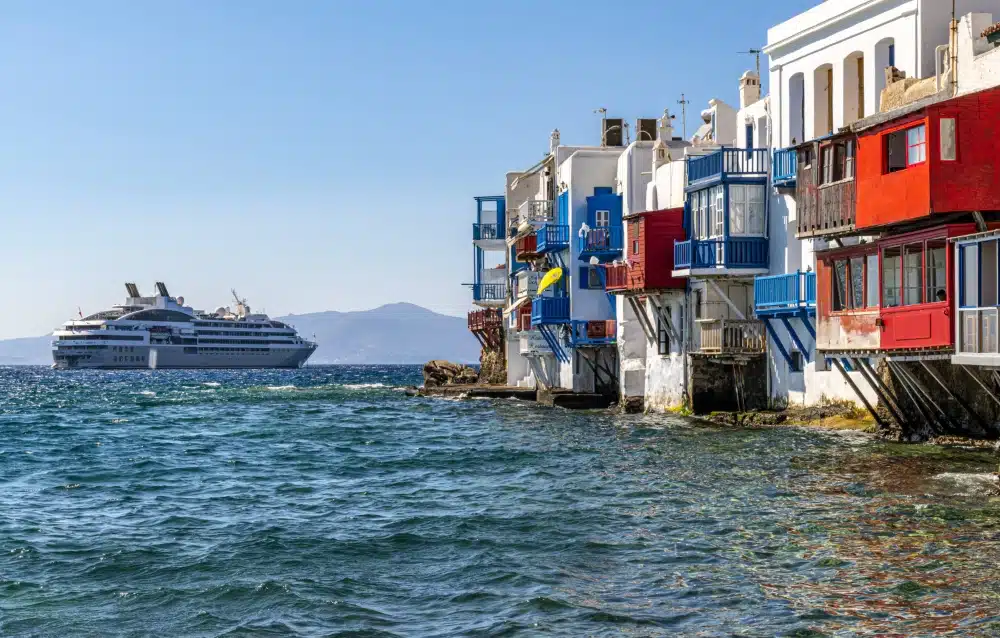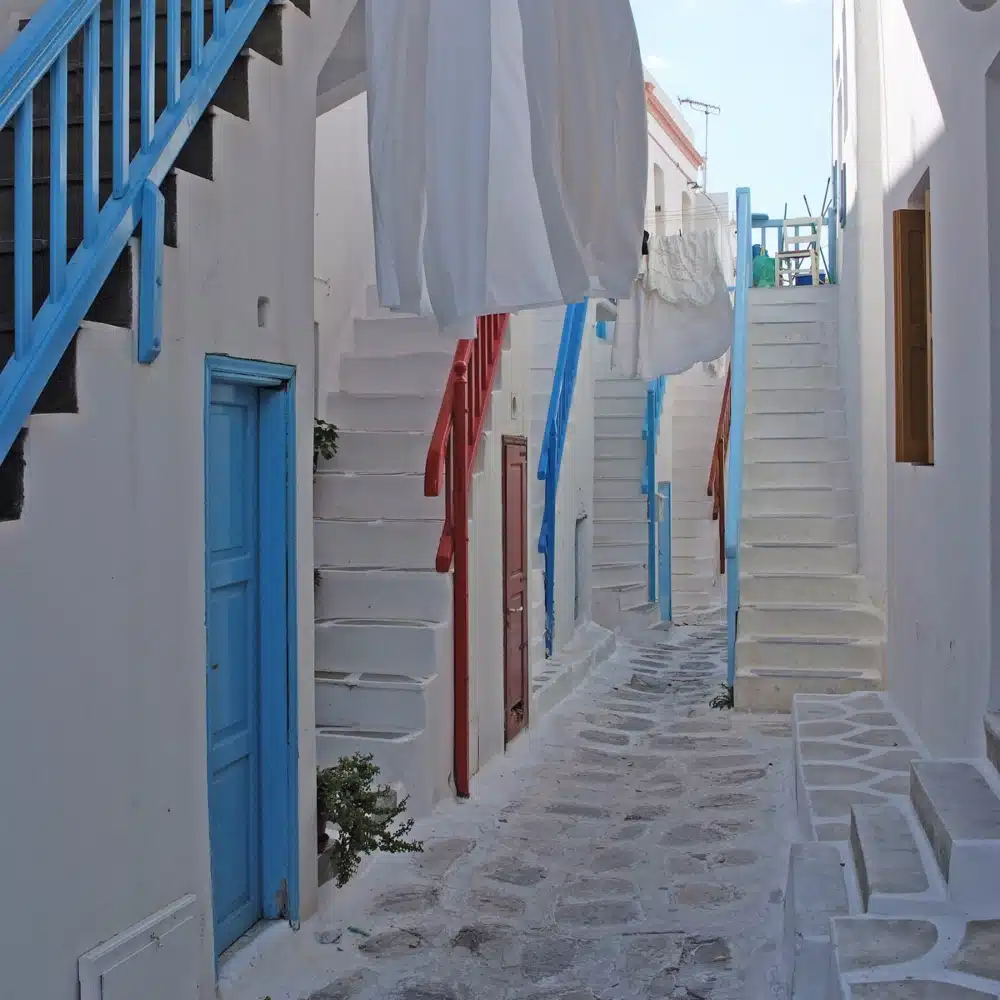In the heart of the Cyclades archipelago, where the turquoise-tinged waters of the Aegean Sea embrace the whitewashed charm of Mykonos, the sun-kissed island tells a tale of timeless beauty. Two main characters take center stage, powered by the wind and immortalized in local lore: the island’s iconic windmills and its endearing pelican mascot. PONANT takes you there, and reveals the story of these beloved treasures, during our spectacular journeys to the Greek Islands.
Don’t let the size of Mykonos mislead you. Within its 34 square miles, it boasts a treasure trove of architectural and cultural gems. Among them, thatched-roof windmills line ridges overlooking the sea and labyrinthine lanes thread their way past sugar-white, cubic houses characterized by sky-blue doorways, brilliant bougainvillea … and the occasional pelican passing by on a stroll.
We love that PONANT shares something in common with the windmills and pelicans of Mykonos. Our carefully measured ability to catch the wind opens up whole new worlds. Here, we share a little of that world with you.
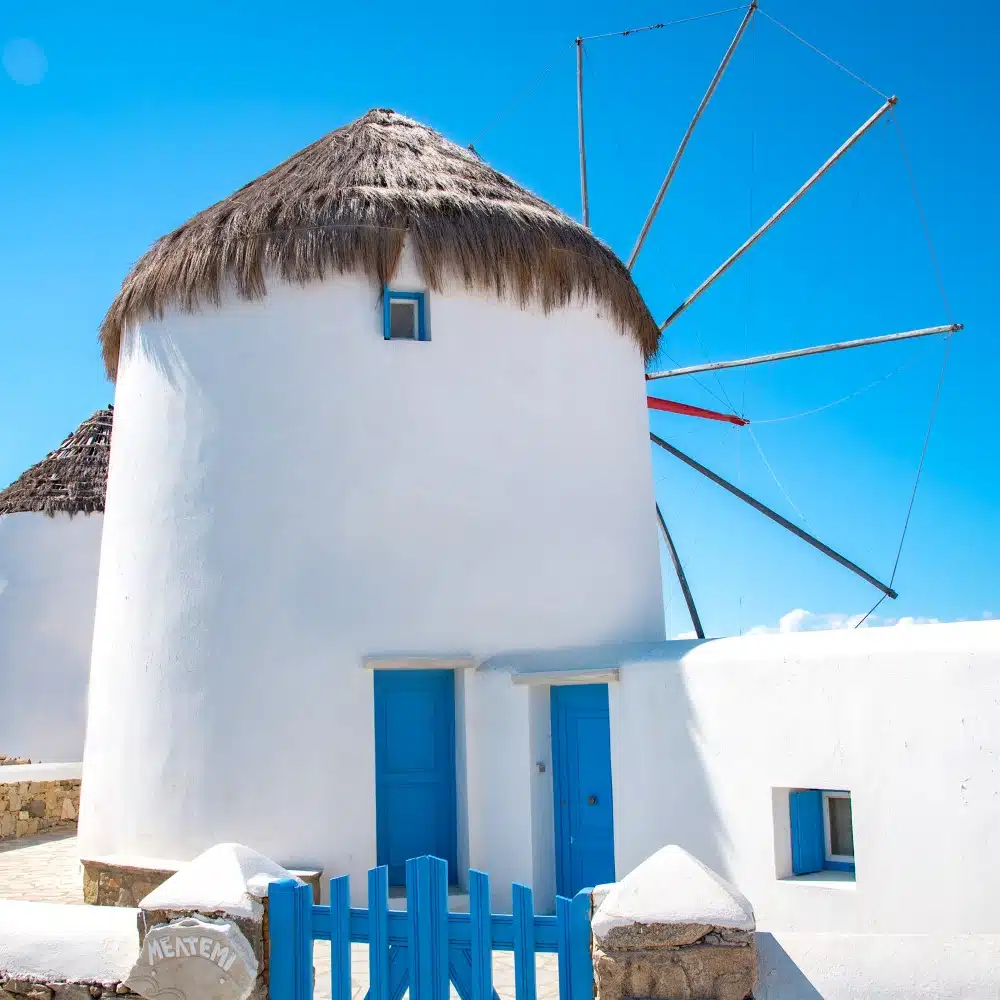
Windmills: Harnessing the Aegean Breeze
When you first glimpse the windmills of Mykonos, you can’t help but be reminded of sentinels standing watch. But these iconic structures were built for a practical and economic purpose, not a military one. Many of them date to the 16th century, constructed by Venetians when that republic ruled here. Mykonos sat in a strategic maritime corridor, making it a crucial hub. The windmills harnessed the island’s gusty winds for grinding grain and producing flour that fed the burgeoning population.
These majestic mills became a symbol of self-sufficiency for the Mykonian community. At their peak, Mykonos boasted over 30 windmills, each standing proudly on a hill overlooking the sea. Soon, sailors could easily identify the island from afar simply by those distinctive whitewashed conical buildings. Even then, no one could deny the beauty of the silhouette they cast against the cerulean backdrop of the Aegean sky.
With the rise of modern technology, the role of these windmills in agricultural production dwindled. By the mid-20th century, the last operational windmill ceased its grain-grinding duties. Today, some of these architectural gems have been carefully restored to preserve their historical significance. The Bonis Windmill, for instance, has been transformed into the Agricultural Museum of Mykonos, offering a captivating journey through the island’s agricultural past. Visitors can explore the inner workings of the windmill, gaining insight into the once vital process of grain milling that sustained the island’s populace. Several others have been repurposed into luxurious accommodations, providing guests with a unique opportunity to immerse themselves in the charm of traditional Mykonian architecture.

Pelicans: Guardians of Mykonos’ Maritime Spirit
As you navigate the narrow, cobbled streets of Mykonos Town (known to locals as Chora), you may well be greeted by the pelican mascot that’s become a cherished aspect of the island’s identity. This winsome denizen of sea and sky plays many roles: symbol of the island’s maritime heritage … a charismatic ambassador … an enchanting curiosity. The original pelican to frequent Mykonos was – famously – Petros, a great white pelican. The feathered inhabitant first arrived in the 1950s, rescued by a local fisherman after a storm and nursed back to health. Petros quickly became an integral part of the community, a fixture in the daily lives of locals. His friendly demeanor and frequent strolls through town endeared him to both residents and visitors, earning him the honorary title of Mykonos’ official mascot.
The original Petros died in 1985. Since then, various successors have carried on his legacy. By some counts, a total of three have been “elected” by locals as the island’s feathered ambassador. And appropriately so. The pelican, with its graceful flight and tranquil presence, embodies the essence of Mykonos – a place where nature and genuine local warmth coalesce seamlessly.

What the Breeze Has Brought to Mykonos
The windmills and pelicans of Mykonos may be distinct in origin, form, and function, yet they share a common thread in the island’s narrative. Both serve as guardians of Mykonos’ heritage, offering a glimpse of the symbiotic relationship between nature and humans. The windmills, once vital to sustenance, stand as resilient witnesses to the island’s evolution, while the resident pelican embodies the enduring spirit of Mykonos and its people.
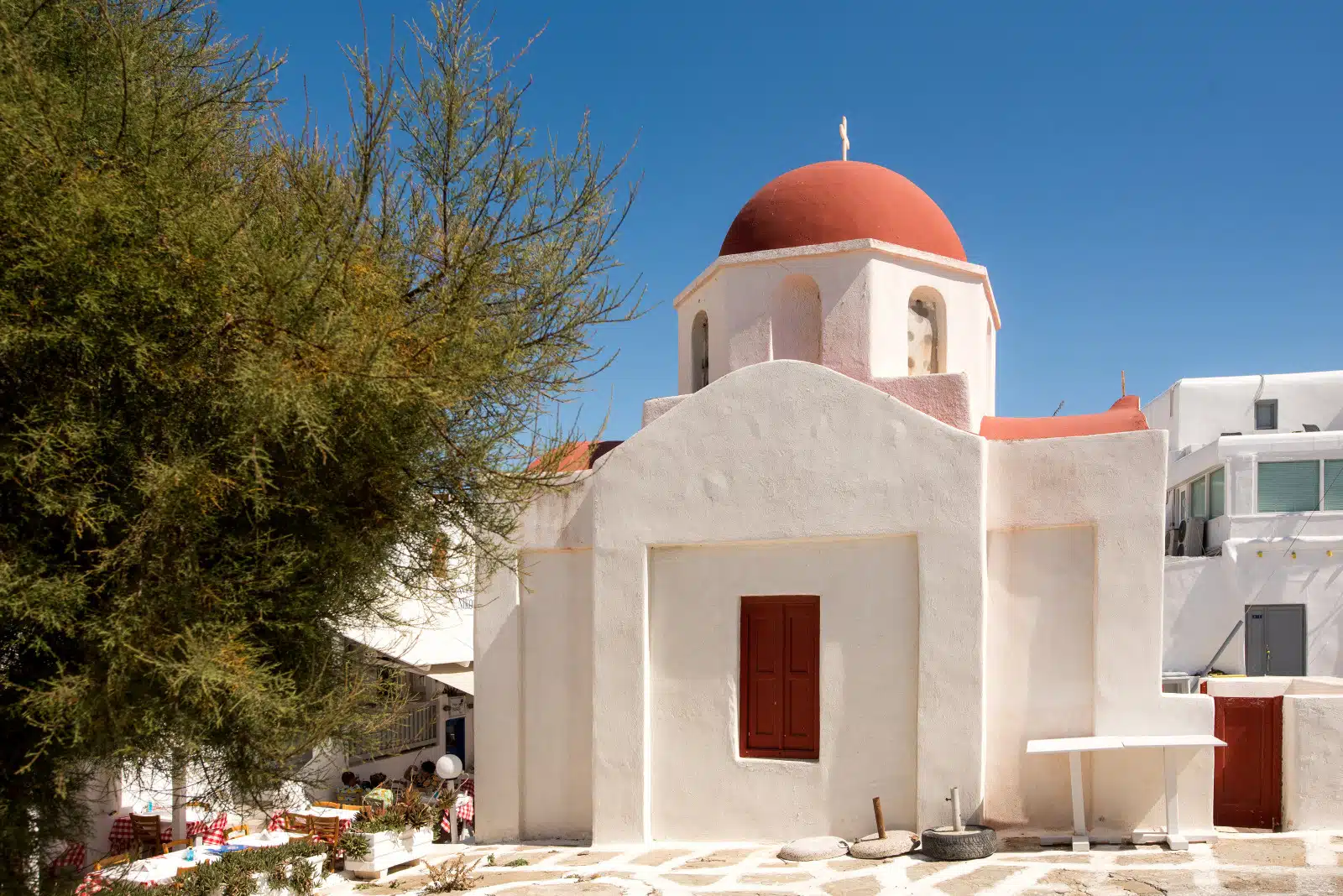
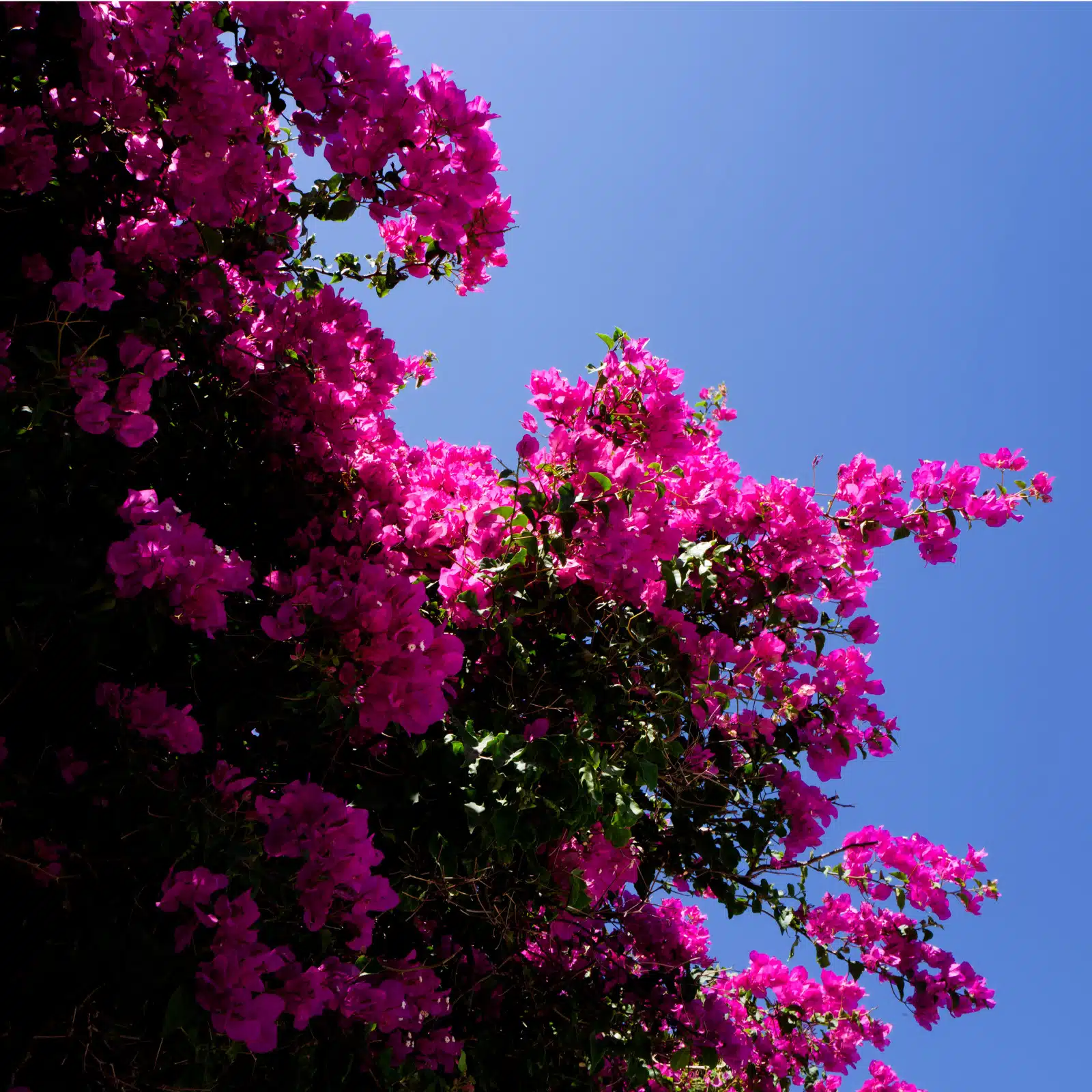
Join us in the Greek Islands
In the Greek Islands, Aegean breezes carry whispers of history, lift pelicans gracefully along the waterfront, and welcome PONANT guests to explore all the cultural and natural wonders of Mykonos. You can find details of our Aegean journeys here. We hope you’ll join us.

